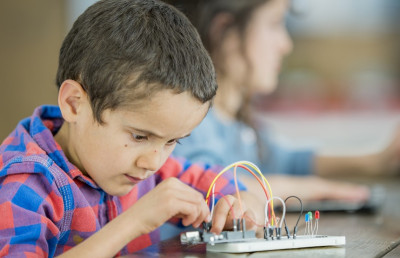
Overview
By creating a simple circuit, your students can explore the connection between electricity and magnetism. Compasses reveal the presence of invisible, magnetic fields around wires through which electricity flows.
Before beginning this activity, make sure that your students know a little bit about magnetism. The "Find the magnetic field" activity is a great introduction to the topic.
Instructions
What you'll need
Each group will need:
- A compass
- Tape
- 1 dry cell battery and holder
- Wire with alligator clips
- "Linking magnetism and electricity" worksheet for each student
Safety first
- Metal components in the circuit you are building will get warm during the activity, so don’t touch the batteries or alligator clips.
- Disconnect the wire after each observation to cool things down.
Getting ready to go
- Organize your students into small groups of three or four.
- Have the groups talk with each other about electricity and magnetism. Ask each group to share a few ideas. Make sure that by the end of the conversation, your students understand that electricity and magnetism are closely related.
- Note that the compasses can be placed under the wire in any orientation, but the wire needs to cut across the middle of the compass.
Create an electrical circuit
- Remind the students to be safe when working with electricity, and have them follow the steps on their "Linking magnetism and electricity" worksheet.
- Have students connect the alligator clip from one end of the wire to the negative pole of the dry cell and tape the wire to the desk or table as shown in the diagram.
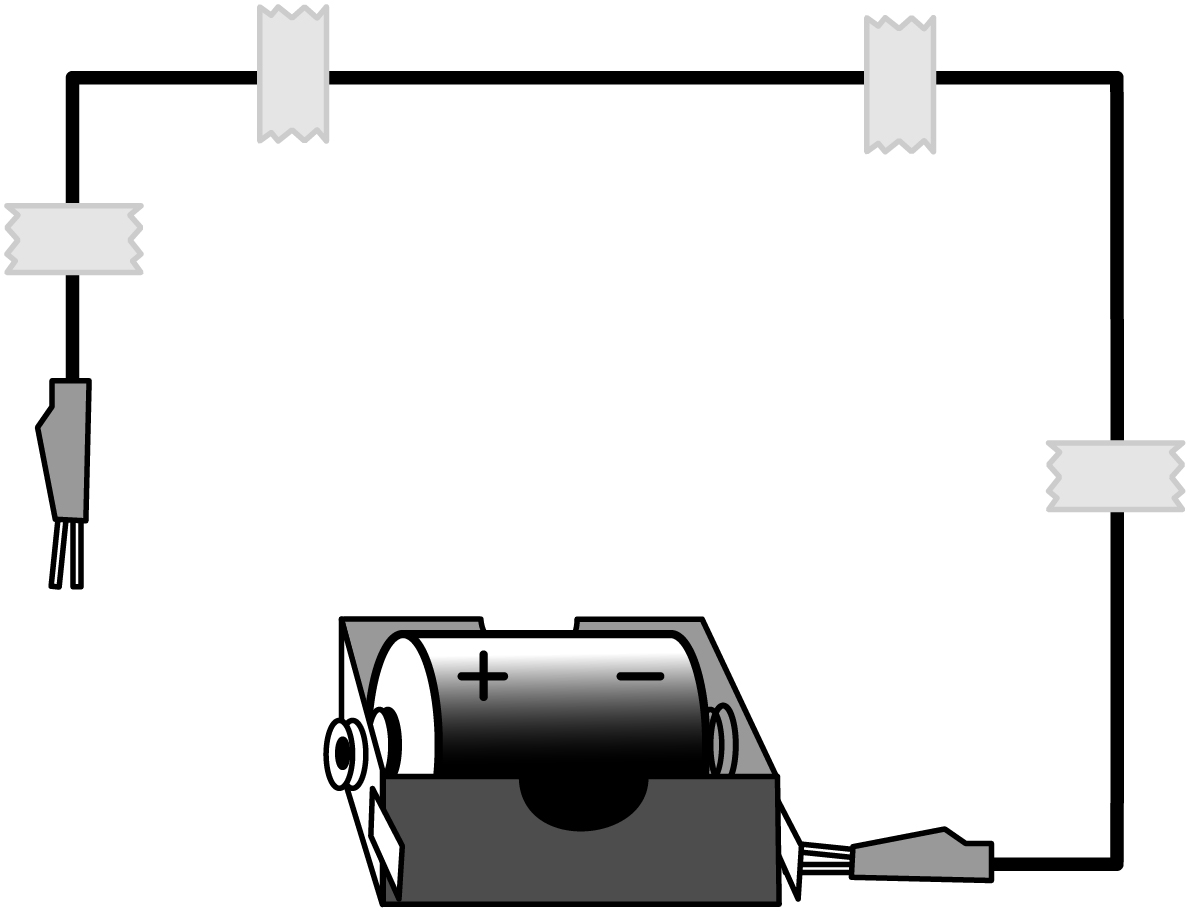
- Next, students should place the compass under the wire and record the direction the compass points.
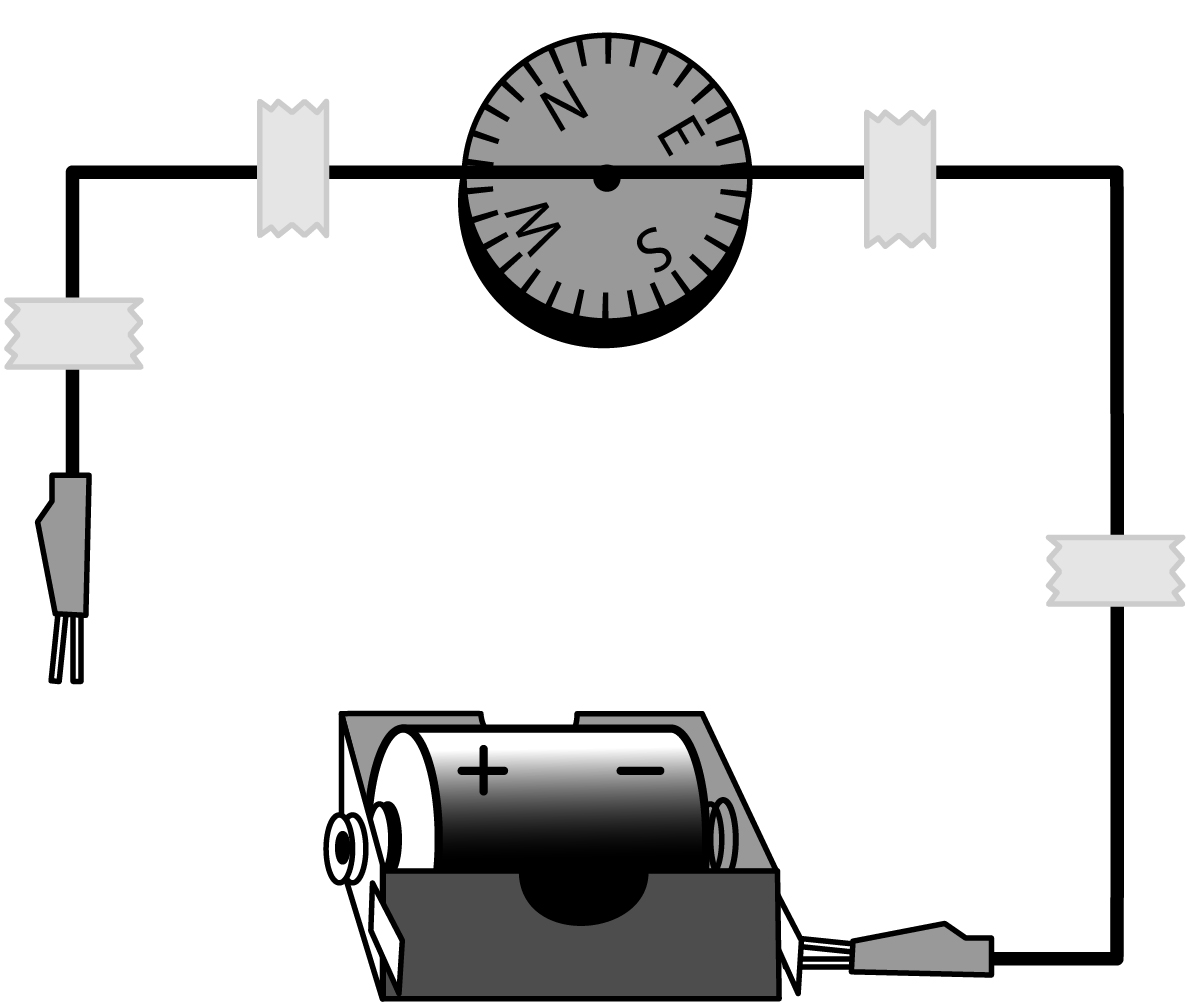
- Students should then connect the alligator clip from the other end of the wire to the positive pole of the dry cell. Have them note what happens to the compass needle and record their observations.
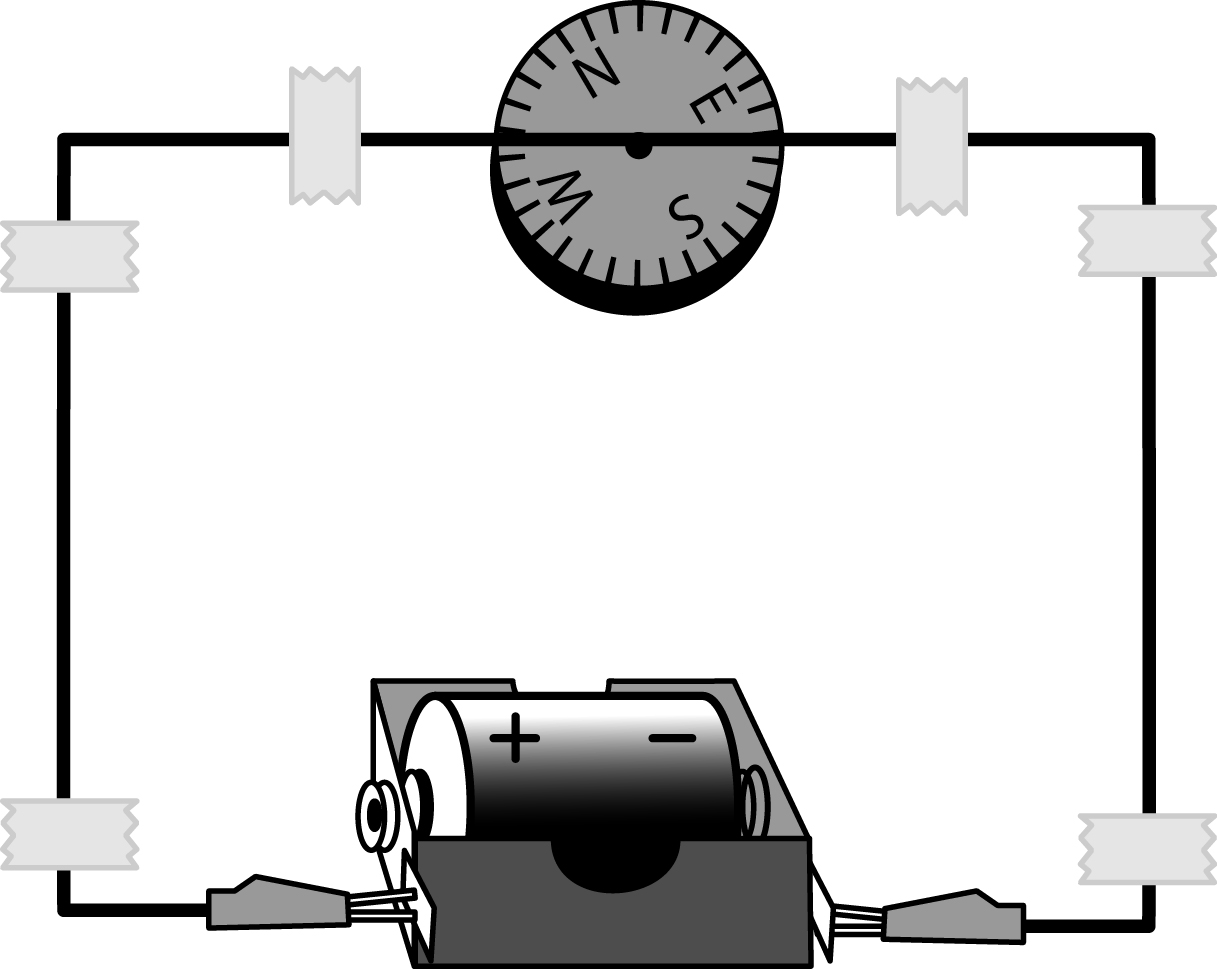
- Students should disconnect one of the alligator clips from the dry cell and let the circuit cool for a few seconds.
- While they wait, they can move the compass to a different place under the wire. Have them predict what will happen when they reconnect the circuit.
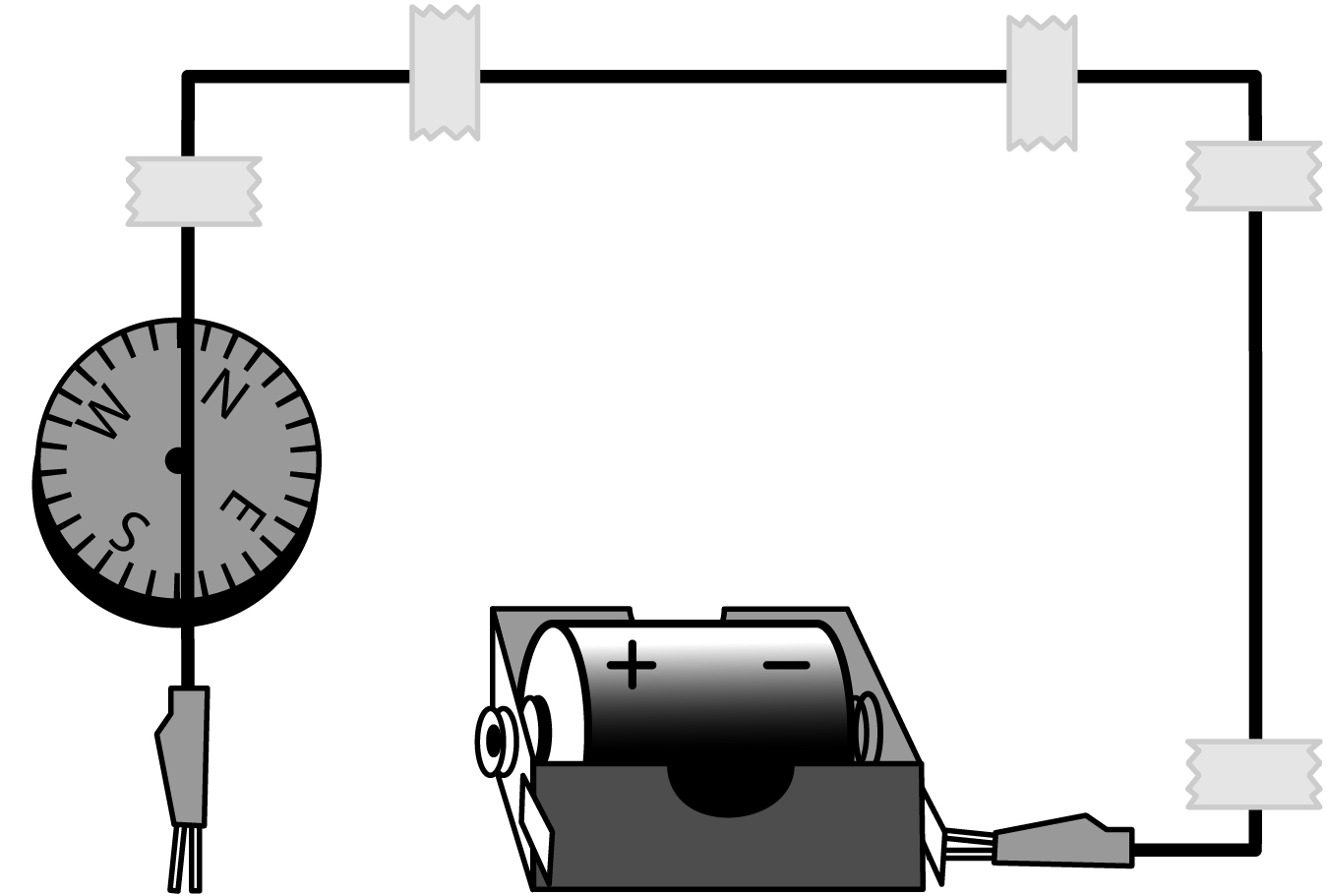
- Have students reconnect the alligator clip and note what happens to the compass needle. They can record their observations on their worksheets.
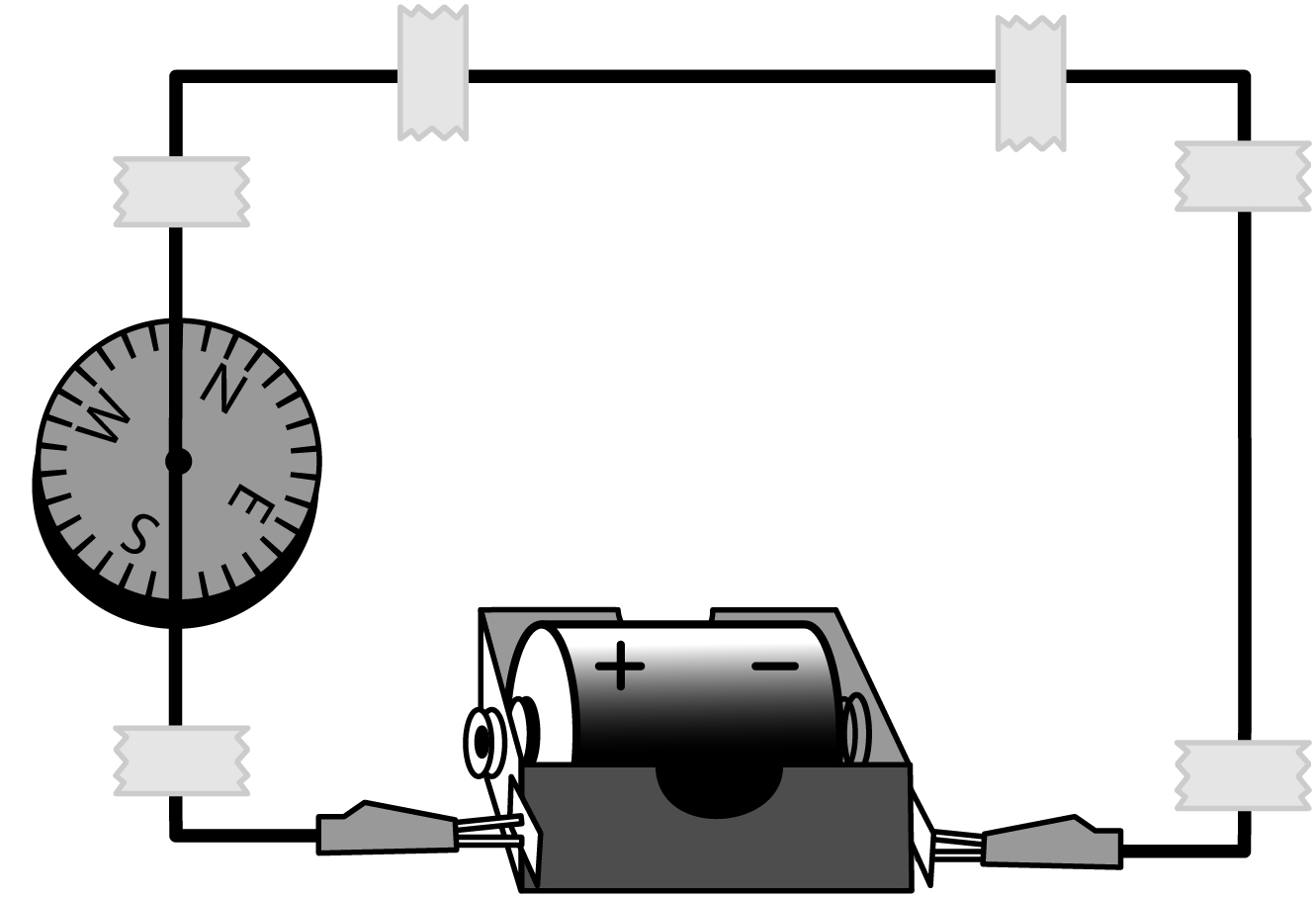
Document and debrief
- Your students should be recording their observations and answering the questions on their worksheet. In their groups, have them review what they’ve learned about the relationship between electricity and magnetism.
- Ask the groups to each share some observations about their circuits and the response of the compass needles. Were their predictions accurate?
Modify or extend this activity
Your students can continue exploring electromagnetism with "Build an electric motor" and "Build an electromagnet".
Ask your students to research the role of electromagnetism in the Aurora Borealis (Northern Lights). NASA has a number of videos that you can watch as a class.
Spotlight the work of scientist Hans Christian Oersted (1777–1851) who discovered the relationship between magnetism and electricity. In 1820, his experiments revealed that a magnetic field is created when electricity flows through a wire carrying current. That is exactly what your students are doing in this activity.
Curriculum Fit
Grade 7 Science
Content
- Electromagnetism
Curricular competencies
Questioning and predicting
- Demonstrate a sustained intellectual curiosity about a scientific topic or problem of personal interest
Planning and conducting
- Conducts hands-on investigations in collaborative groups
- Observe, measure, and record data
Processing and analyzing data and information
- Use scientific understanding to identify relationships and draw conclusions
Evaluating
- Demonstrate an understanding and appreciation of evidence
Applying and innovating
- Transfer and apply learning to new situations
Communicating
- Communicate ideas, findings and solutions to problems
Assessments
- Observe students during the activity and notice their ability to:
- Demonstrate how electric current creates magnetic fields
- Identify questions about electromagnetism
- Make observations and record data
- Explain how the Earth’s magnetic field affects compass movements
- Use the "Linking magnetism and electricity competencies assessment" form to assess your students.
Worksheet answer key
Review the worksheet responses of your students.
Procedure and observations
A: No matter where the compass is placed, when it is under the wire and the circuit is closed, the compass needle will point across, or perpendicular to, the wire.
Analysis and conclusions
Q: How are your observations different from how you thought a compass works?
A: The compass needle moves from magnetic north to a position perpendicular to the wire.
This investigation shows that the compass needle is affected by the electricity moving through the circuit.
Why do you think the compass is responding to the electricity?
The compass needle moves in response to the electricity because a magnetic field is created in the wire when the circuit is connected.
What is the connection between a bar magnet and a wire with electricity owing through it?
They both have a magnetic field around them.
They both affect how a compass works.
Both the magnetic fields affect the needle of a compass.
Teaching Notes
Compass needles react to magnetic fields. Normally, they align to Earth’s magnetic field, which is created by the movement of liquid metal in the core of the planet.
But compasses will also react to smaller magnetic fields, like those in an electric circuit.
When a circuit is closed, electrons move through the wire, creating an electrical current. The movement of the electrons through the metal of the wire produces a magnetic field around the wire. The compass needle reacts to this magnetic field.





